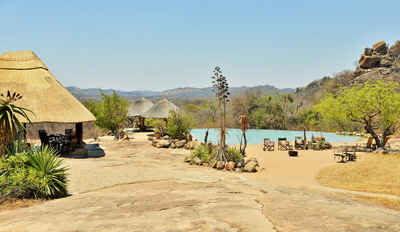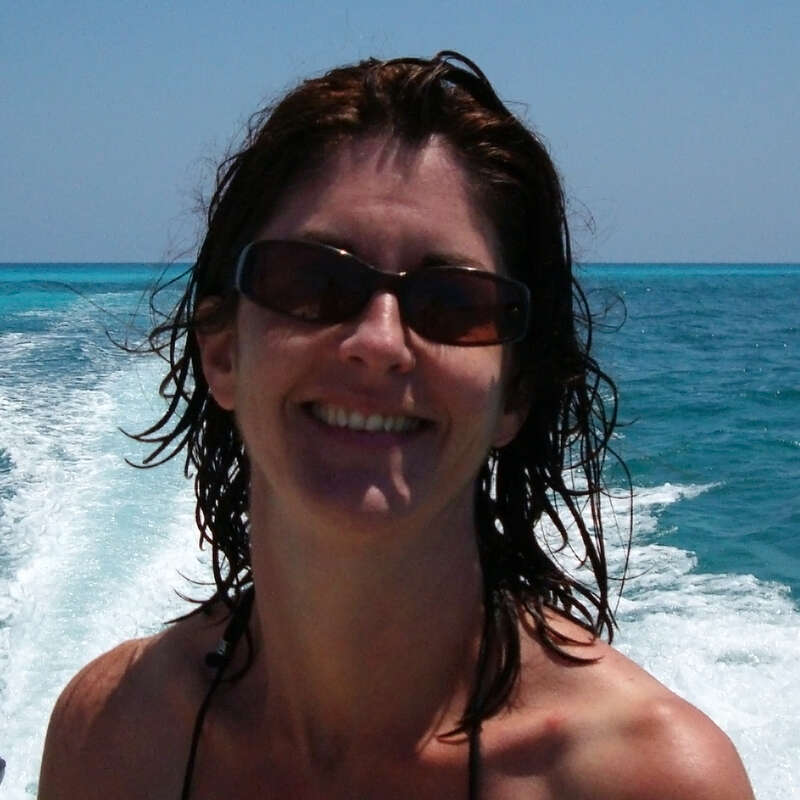About Amalinda Lodge
In a small private concession within Matobo Hills, Amalinda Lodge occupies a truly spectacular location.
The lodge, formerly Camp Amalinda, is comfortable and owner run, with authentic, cleverly designed rooms built amongst ancient granite boulders. Come for the setting, the rich history and the opportunity to track rhino on foot.
Amalinda is a highly original lodge. It has been built into the Matobo Hills with an imagination and flare that not only incorporates its natural surroundings with great style and comfort, but also pays homage to the area's history. It offers intelligent historical and cultural activities, relatively easy rhino tracking, and some gentle safari activities that pleasantly contrast with and complement the more safari-focused camps in the larger national parks. It's a great lodge in a stunning area, and it's well worth a visit.
Our view
Amalinda is a highly original lodge. It has been built into the Matobo Hills with an imagination and flare that not only incorporates its natural surroundings with great style and comfort, but also pays homage to the area's history. It offers intelligent historical and cultural activities, relatively easy rhino tracking, and some gentle safari activities that pleasantly contrast with and complement the more safari-focused camps in the larger national parks. It's a great lodge in a stunning area, and it's well worth a visit.
Accommodation
9 chalets
Children
Best for aged 12+
Open
All year
Activities

4WD Safari

Birdwatching

Cultural excursion

Guided walking safari

Private activities

Self-guided walking
Traveller reviews of Amalinda Lodge
46 real, un-edited reviews from Expert Africa's travellers.
Arrived 26 Apr 2025, 3 nights
"Amalinda Lodge review"
Overall rating: Excellent
Arrived 12 Jan 2025, 4 nights
"Amalinda Lodge review"
Overall rating: Excellent
Arrived 24 Dec 2024, 2 nights
"One of a kind"
Overall rating: Excellent
Arrived 4 Dec 2024, 4 nights
"Amalinda Lodge review"
Overall rating: Good
Arrived 9 Sep 2024, 3 nights
"Amalinda Lodge review"
Overall rating: Excellent
Arrived 13 Aug 2024, 3 nights
"Amalinda Lodge review"
Overall rating: Excellent
Arrived 2 Aug 2024, 3 nights
"Amalinda Lodge review"
Overall rating: Excellent
Arrived 5 May 2024, 3 nights
"Amalinda Lodge review"
Overall rating: Excellent
Arrived 2 Jan 2024, 3 nights
"Amalinda Lodge review"
Overall rating: Good
Arrived 25 Jul 2023, 3 nights
"Amalinda Lodge review"
Overall rating: Good
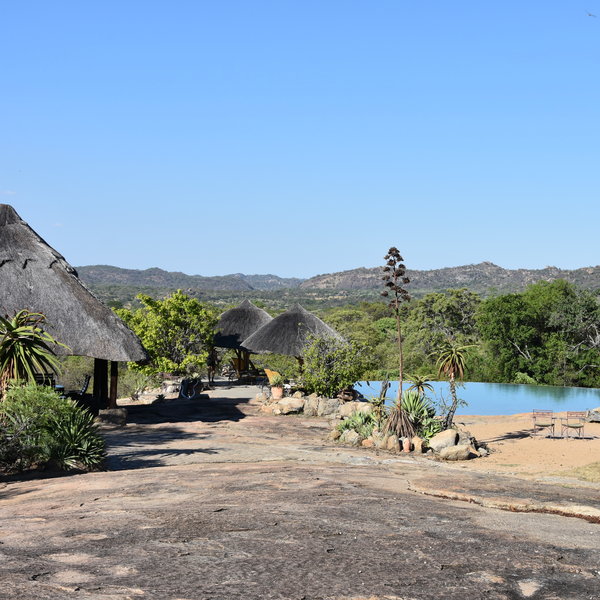
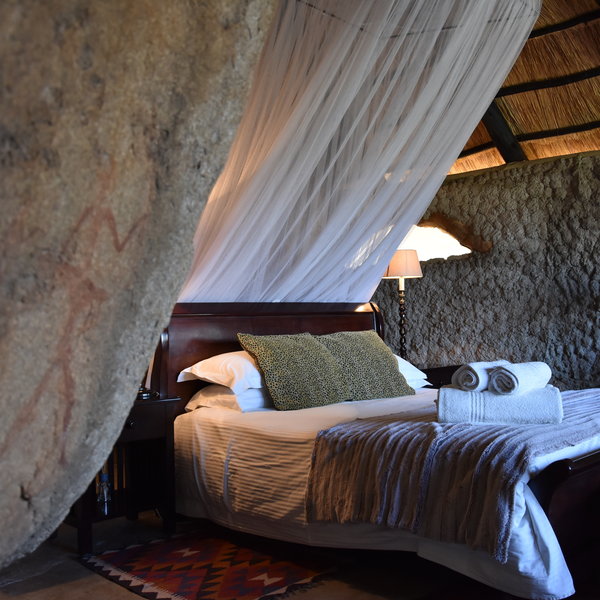
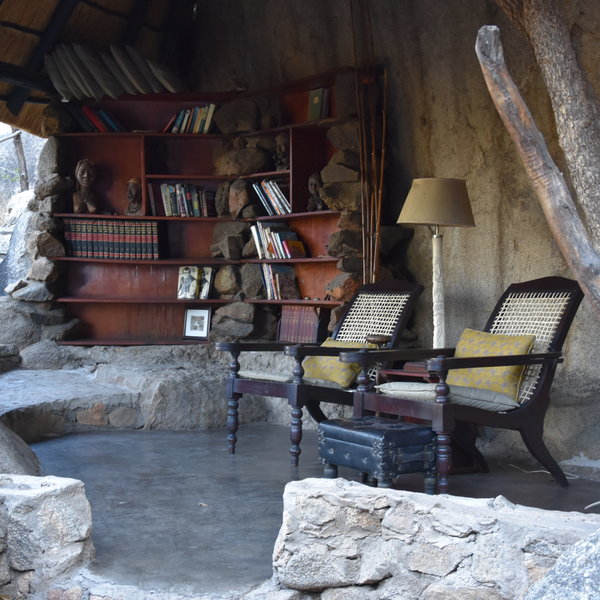
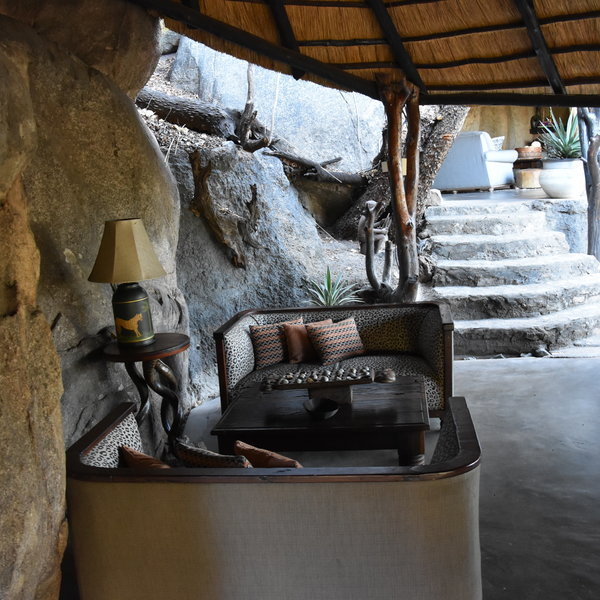
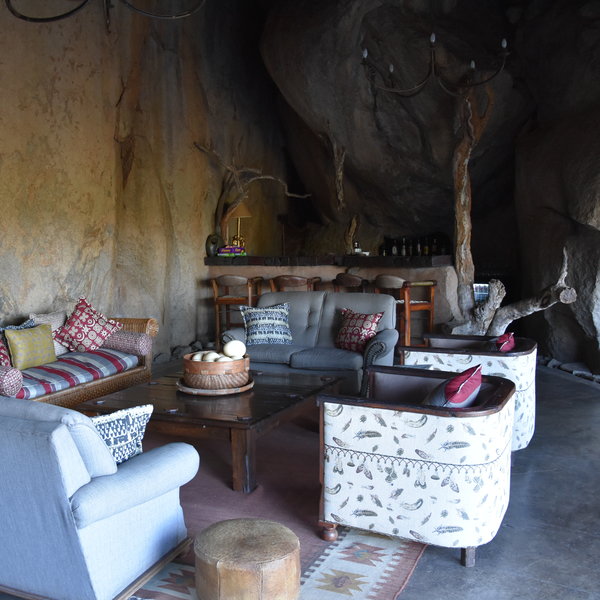
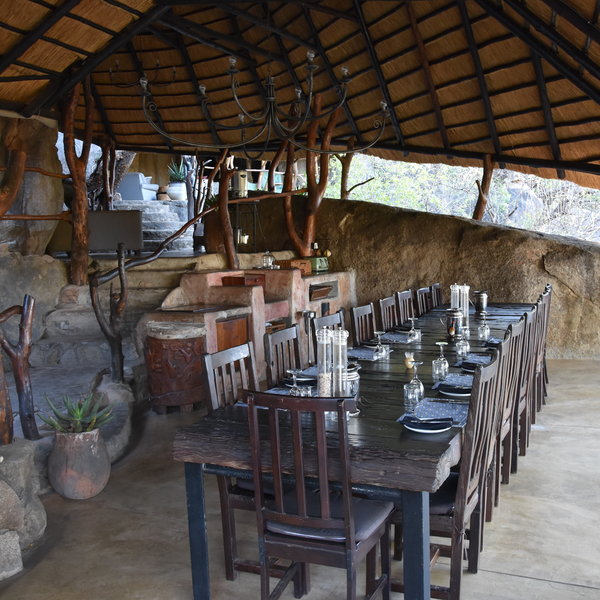
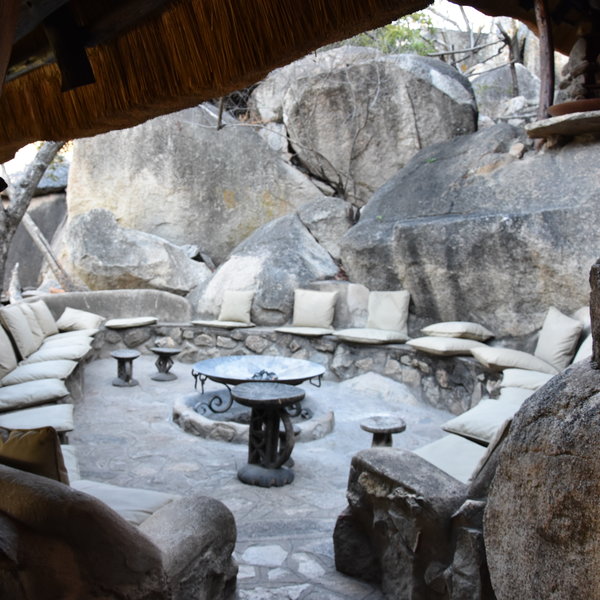
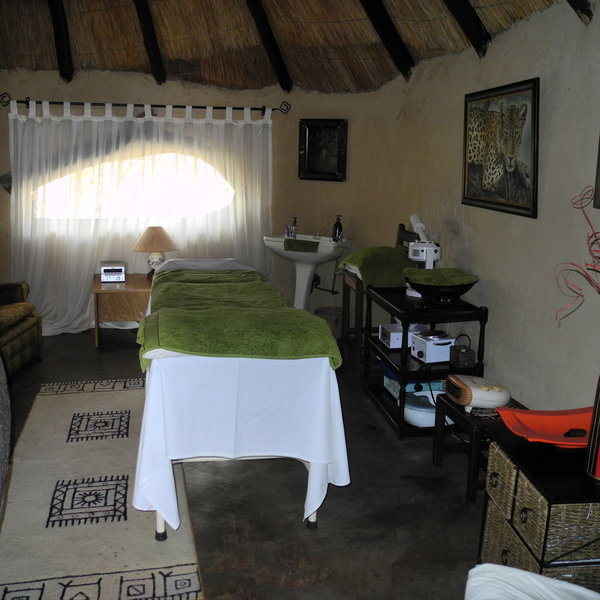
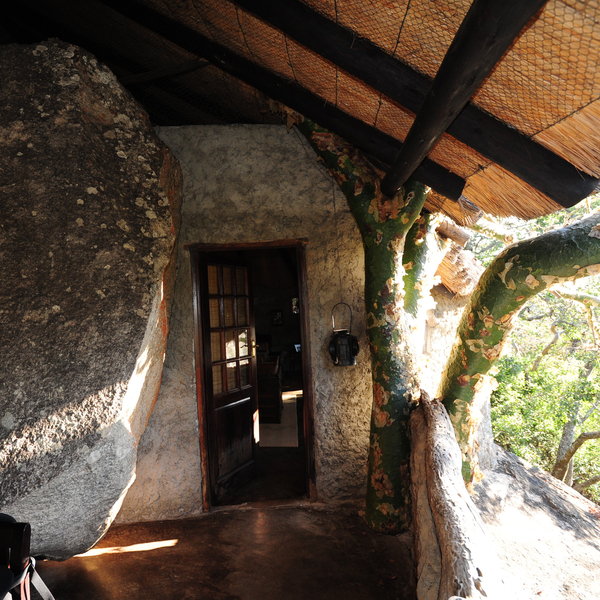
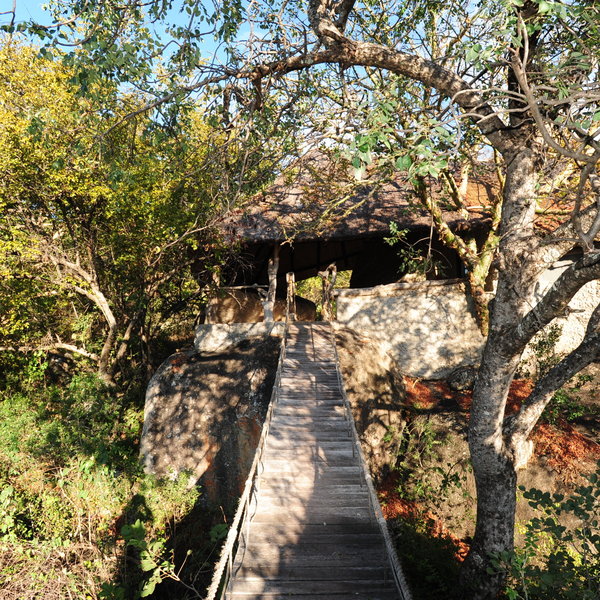
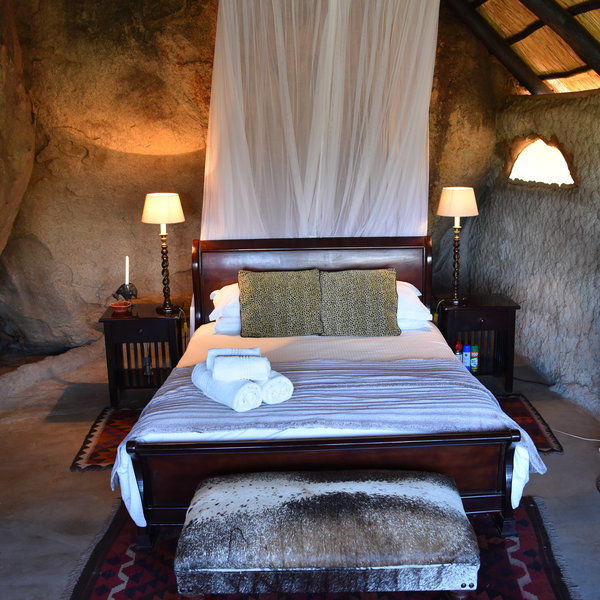
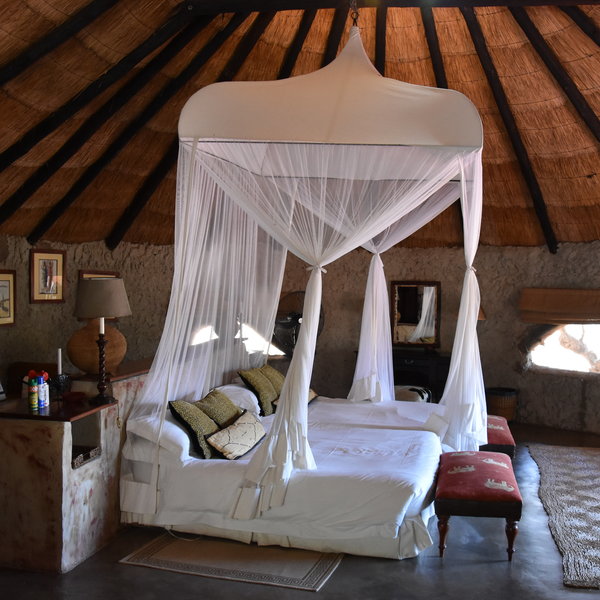
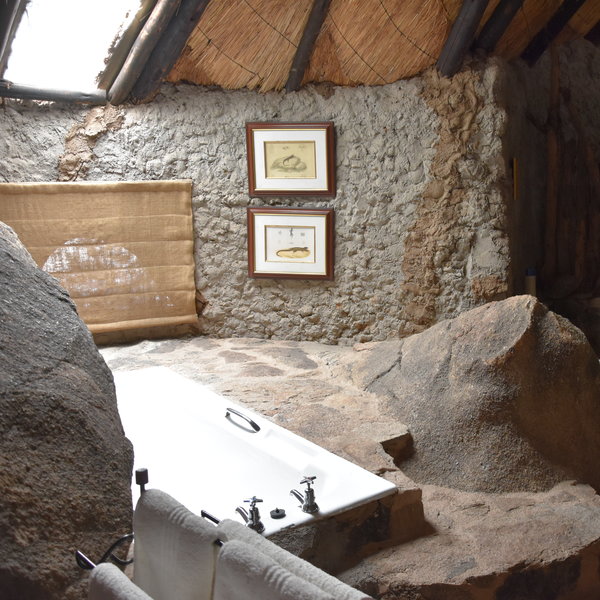
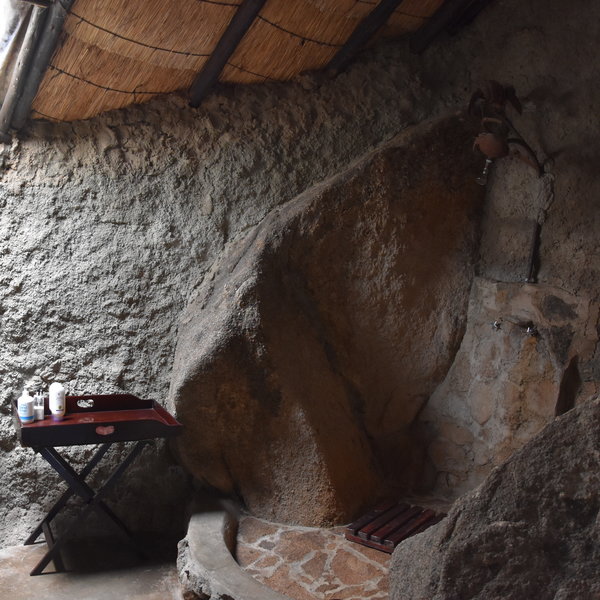
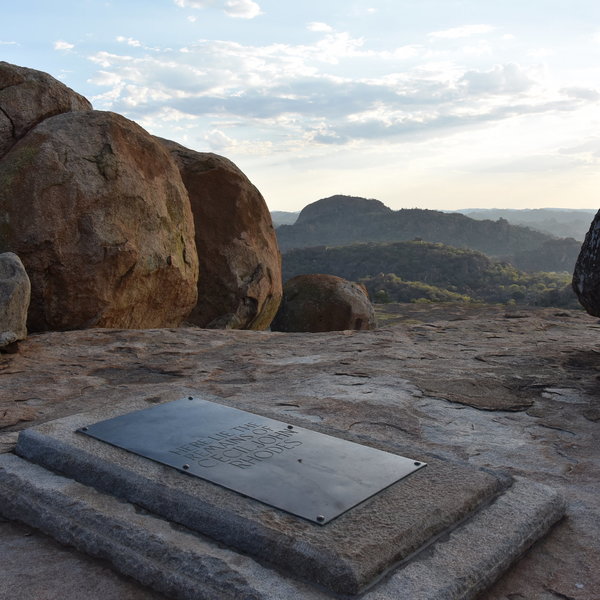
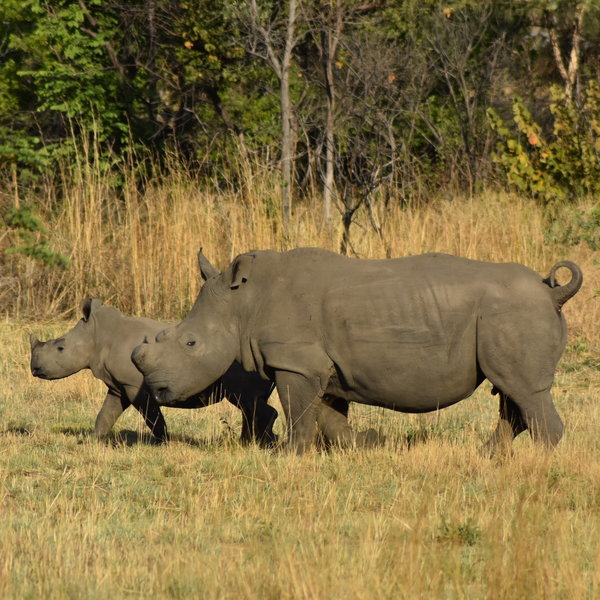
Expert Africa's gallery
When we travel we take lots of photos ourselves to give you a real and un-edited view of the safaris. See our 40 pictures and 2 videos of Amalinda Lodge to get the candid view.
View gallerySafaris visiting Amalinda Lodge
Just ideas, we'll always tailor-make a trip for you
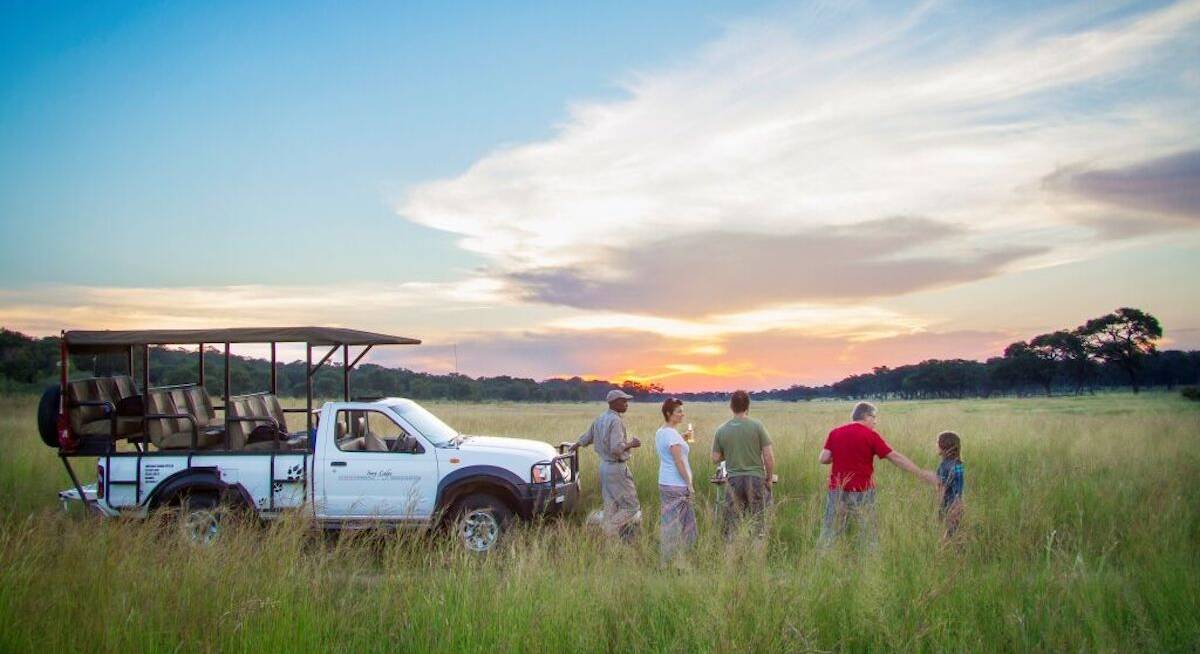
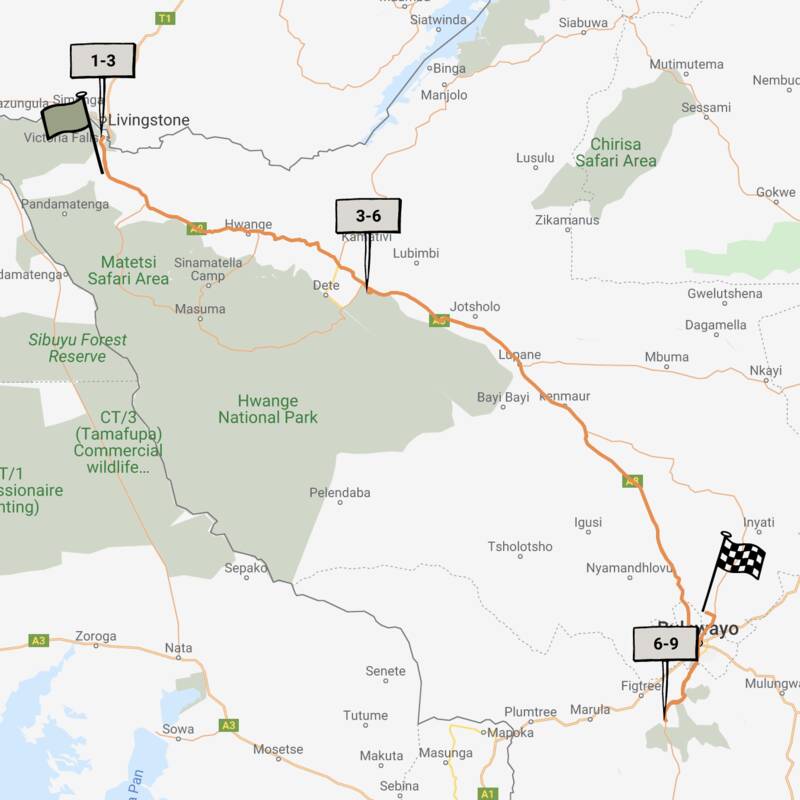
Klipspringer Safari
8 days • 3 locations • 1 country
VICTORIA FALLS AIRPORT TO BULAWAYO AIRPORT
An outstanding-value Zimbabwe safari exploring Victoria Falls and two contrasting locations in western Zimbabwe – Hwange and the Matobo Hills – giving you a real feel for Zimbabwe, its people and wildlife.
Visiting Matobo, Hwange and 1 other area
US$3,040 - US$3,570 per person
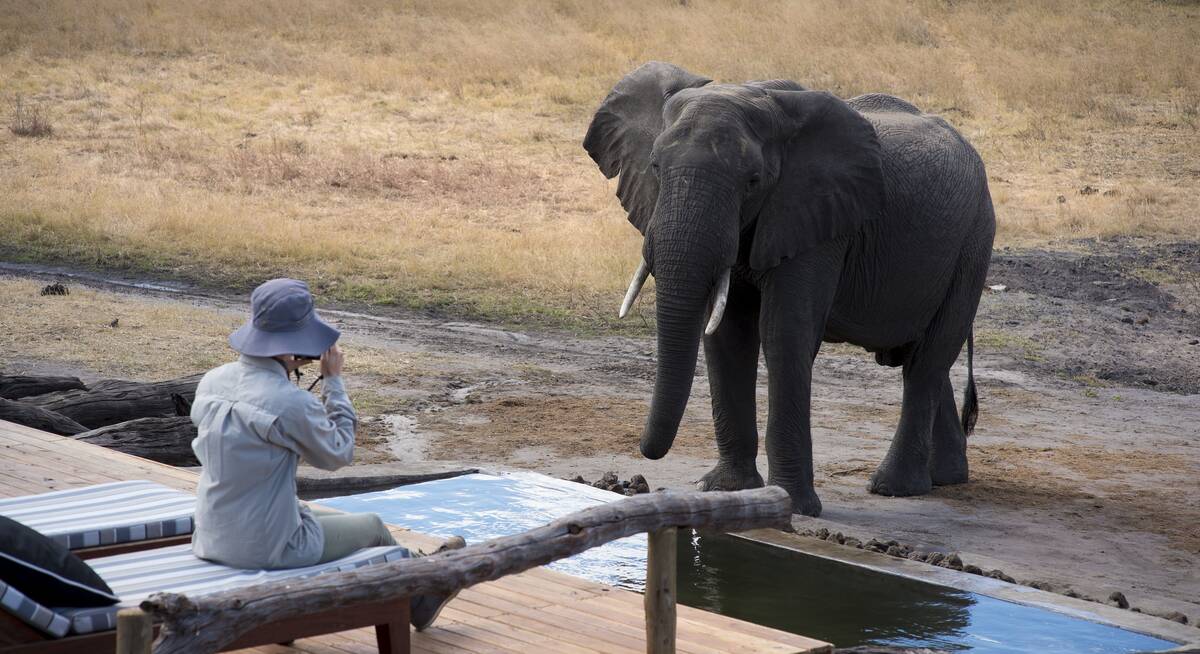
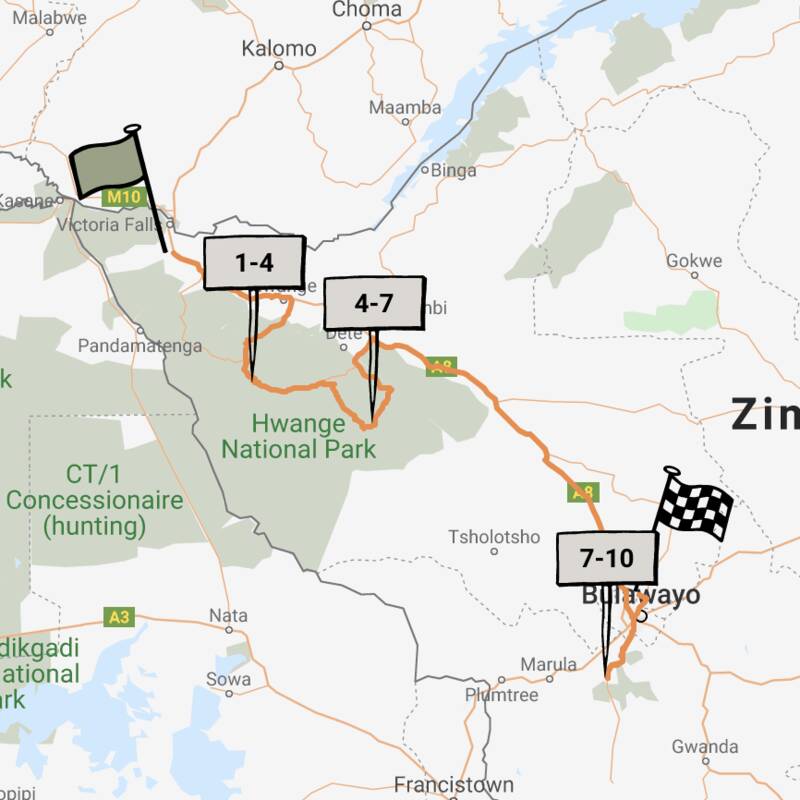
Ground Hornbill Safari
9 days • 3 locations • 1 country
VICTORIA FALLS AIRPORT TO BULAWAYO AIRPORT
This Zimbabwean odyssey explores Hwange National Park from two small camps, renowned for their great guiding, before ending with insights into cultural history, a little luxury and first-class rhino tracking in the Matobo Hills.
Visiting Matobo, Hwange
US$5,540 - US$8,560 per person
Amalinda Lodge: Our full report
In a small private concession within Matobo Hills, Amalinda Lodge occupies a truly spectacular location.
The lodge, formerly Camp Amalinda, is comfortable and owner run, with authentic, cleverly designed rooms built amongst ancient granite boulders. Come for the setting, the rich history and the opportunity to track rhino on foot.
Often referred to as simply ‘Amalinda’, this was the first lodge in the Amalinda Collection. Today it has three sister properties in Hwange National park: Ivory Lodge, Khulu Bush Camp and Khulu’s Retreat.
You’ll be welcomed to Amalinda at the foot of the hill, but Amalinda’s multi-level main area is set up among the boulders, wild fig trees and paper-bark thorn acacias. The large lounge/bar feels almost cave-like, with granite boulders making up three sides of the room – though the proliferation of comfortable sofas and colourful cushions creates a welcoming space in which to relax. For a little more privacy there are other nooks to hole away in: the small library make a great spot to curl up with a book, the seats by the lodge’s wine cave/cellar have some superb views and the firepit is a favourite spot for a pre-dinner drink. In a nod to the area’s colonial history, a huge communal table constructed from old railway sleepers and rails dominates the dining room; you’ll also find a seemingly endless supply of tea and coffee here.
One of the most remarkable features of Amalinda is a large infinity pool, cleverly constructed from a natural depression within a huge granite 'whaleback', and blending naturally into the landscape. It’s well worth a visit for a drink at the pool bar and to soak in the vista, even if you’re not prepared to brave the unheated waters. Lunch is sometimes served on a ‘beach’ by the pool or in the bar itself.
Like the lounge, each of Amalinda's nine thatched chalets (including three suites) has the feeling of a natural cave, albeit an incredibly well-furnished and very comfortable cave. Each is unique, defined in shape and size by the space allowed by the boulders, which often form the walls of the room; one chalet even features a genuine San rock painting. The suites again are all different, one has an outdoor shower, a couple a bath and one has a separate sala (day bed) accessed by rope bridge. The novelty of sleeping (quite literally) between the rocks doesn't wear off quickly.
Inside, photos of Southern Rhodesia's colonial past set the mood, with leather and teak furniture adding to the overall atmosphere. On our last visit in November 2017 we felt that the open-plan rooms were a little dark but skylights were being added to combat this. Polished concrete floors run throughout, softened by various rugs and mats. The beds, surrounded by mosquito nets, are substantial; there’s a seating area with a coffee table, tea and coffee station and minibar; and you’ll also find a separate writing table with a lamp.
In the en-suite bathrooms, open-plan showers with hot and cold water are carved into the rock-face, and there are flush toilets. Outside, most of the chalets have a private balcony from which you can enjoy views of the surrounding kopjes and rolling hills beyond.
While game viewing at Amalinda is conducted both by vehicle and on foot, the activities here are less focused on wildlife than in other Zimbabwean national parks, with a compensating emphasis on cultural attractions. That said, you’ll often see Verreaux's (black) eagles soaring high above the lodge, while back on terra firma, Matobo Hills National Park has an intensively protected game area, with a high density of rhino. Amalinda offers the opportunity to track both black and (particularly) white rhino on foot. The open terrain and experienced guides give guests a good chance to find and approach these giants, though do note that the guides don’t walk with rifles and, while there are no lion, buffalo or elephant in the area, there is still a risk associated with this activity.
On the cultural side of things, the nearby graves of Cecil John Rhodes and Leander Starr Jameson are 'must sees'; the park was formerly called the 'Rhodes Matopos National Park'. Stepping further back in time, Matobo is also one of the world’s richest sources of San rock art. Amalinda is lucky enough to have academic archaeologist Paul Hubbard as a very engaging guide who, on some of our visits to Amalinda, has really brought to life these key aspects of Southern Africa's history. (Do talk to us about what else Paul has to offer – not just at Amalinda but as a private guide in Bulawayo and further afield.)
At a more personal level, you can also visit a traditional village to find out how the local Matabele people have lived for centuries, or see some of the development work within local communities that’s been funded by the Amalinda Collection’s profits and their 'Mother Africa Programme'.
Back at the lodge, walking and mountain biking are additional activities and the Heritage Spa & Sauna offers a number of different treatments and products, including 'hot-stone therapy' and Shiatsu massages – a perfect antidote to a long morning or afternoon walking and tracking.
Geographics
- Location
- Matobo National Park, Zimbabwe
- Ideal length of stay
- Two nights works well here, or three if you really want to get to grips with the history as well as to track rhino.
- Directions
- Most guests fly to Bulawayo and are then transferred by road (approx. one hour) to the lodge. Alternatively it is approx. 4 hours by road to Hwange Main Camp.
- Accessible by
- Fly-and-Transfer
Food & drink
- Usual board basis
- Full Board & Activities
- Food quality
- On our last visit to Amalinda Lodge in November 2017 we were impressed by the high standard of food.
Breakfast, served in the main area, is a relaxed meal that can be taken early or organised for a little later, depending on your morning activity. There's a simple but sufficient buffet of the usual cereals, yoghurts and pastries, with a cooked breakfast available from the kitchen.
Lunch is again usually served in the main area. We enjoyed relatively simple but delicious tilapia (fish) served with couscous and salad, followed by a fruit sponge.
Dinner is generally a three-course meal. We enjoyed a feta and spinach filo parcel to start. Pork medallions in a creamy sauce were served with potatoes and seasonal vegetable, and a self-saucing chocolate pudding rounded off the meal nicely. - Dining style
- Group Meals
- Dining locations
- Indoor and Outdoor Dining
- Further dining info, including room service
- No
- Drinks included
- Soft drinks, bottled water, spirits, local beers and a selection of (generally) South African wines are usually included. Other imported wines, spirits and champagne cost extra – and may need to be requested in advance.
The tap water is considered safe to drink, but bottled water is available on request.
Special interests
- Family safaris
- The Amalinda Homstead, a 3-bedroom private villa, was home to Amalinda's owners, the Stead's, when they had young children. Now available to book this is a fantastic option for a family safari with flexible activities and privacy.
- See ideas for Family safaris in Zimbabwe
- Honeymoons
- Nestled among the granite boulders of the Matobo Hills, Amalinda’s unique and luxurious rooms offer the perfect bolthole to escape the world, relax and soak in the majesty of the lodge’s surroundings on your African honeymoon.
- See ideas for Honeymoons in Zimbabwe
- Cultural Experiences
- From Bushman paintings and the grave of Cecil Rhodes to Bulawayo and the Khami ruins, guests at Amalinda have much of Zimbabwe's history at their fingertips. For an even more in-depth immersion in the area's history, why not book private guiding with Paul Hubbard?
- See ideas for Cultural Experiences in Zimbabwe
- Wildlife safaris
- The Matobo Hills is an excellent and relatively easy place to track white rhino on foot, making it very appealing for a wildlife safari in Zimbabwe. The open terrain and experienced guides give guests at Amalinda a good chance to find and then approach these giants.
- See ideas for Wildlife safaris in Zimbabwe
- Wellbeing
- For travellers looking to relax and unwind it doesn’t get much better than Amalinda Lodge. Luxurious rooms and an in-house spa and sauna against the unique setting of Zimbabwe’s Matobo Hills make this a fantastic place to spoil yourself.
- See ideas for Wellbeing in Zimbabwe
- Walking
- The landscape around Amalinda is a major attraction for walkers in Zimbabwe. As a bonus, Matobo Hills National Park is one of the few remaining areas in Southern Africa where white rhino can be found relatively easily, and approached on foot.
- See ideas for Walking in Zimbabwe
- Luxury safaris
- Cleverly designed around the boulders of the Matobo Hills, Amalinda offers a unique take on a luxury safari in Zimbabwe. Spend the evening around the fire, as our ancestors did, before retiring to the “olde worlde” opulence of your suite.
- See ideas for Luxury safaris in Zimbabwe
Children
- Attitude towards children
- Amalinda is happy to accept children of all ages.
- Property’s age restrictions
- The age at which children may be taken rhino tracking is determined on a case-by-case basis – by their height, age and behaviour. However, as a guideline, most big-game walking safaris would only be possible for children over about the age of 12.
- Special activities & services
- Childcare: Amalinda Lodge offers child minding on request. Please note that the minders are members of the housekeeping staff, and are not qualified babysitters.
- Equipment
- None
- Generally recommended for children
- Although children are welcome at Amalinda, they don't specifically cater for them. While many of the activities may be of interest to some children, there are restrictions on those taking part in rhino tracking, and both this and cultural tours require a level of patience and walking over rough terrain, so won't be suitable for all.
- Notes
- There are numerous steep staircases and rocky outcrops around the lodge, which could prove particularly hazardous for young or unpredictable children. Supervision by a parent or guardian is required at all times.
Our travellers’ wildlife sightings from Amalinda Lodge
Since mid-2018, many of our travellers who stayed at Amalinda Lodge have kindly recorded their wildlife sightings and shared them with us. The results are below. Click an animal to see more, and here to see more on our methodology.

96% success

86% success

48% success

45% success

32% success

26% success

5% success

0% success

0% success

0% success

0% success

0% success

0% success

0% success
Communications
- Power supply notes
- There’s a 24-hour generator as back-up in case of power cuts.
- Communications
- There is limited cellphone reception in the hills around Amalinda (best when you're on top!). Limited free WiFi is available in the reception area.
- TV & radio
- No
- Water supply
- Mains
- Water supply notes
- Bathrooms have flushing toilets and hot and cold running water for the showers and basins.
Health & safety
- Malarial protection recommended
- Yes
- Medical care
- The nearest doctor is in Bulawayo, about 65km from the lodge. A Medical Air Rescue Service (MARS) is available for serious incidents.
Swimming pool warning: Please be aware that the swimming pool at Amalinda Lodge does not have depth markings or No Diving signs. Bathers need to be careful when entering the pool. - Dangerous animals
- High Risk
- Security measures
- Security guards patrol the property.
- Fire safety
- There are fire extinguishers in the main area.
Activities
4WD Safari
Birdwatching
Cultural excursion
Guided walking safari
Private activities
Self-guided walking
Extras
- Disabled access
- On Request
- Laundry facilities
- A full laundry service is usually included.
- Money
- There is a safe in each of the chalets. There are no money-exchange facilities at the lodge.
- Accepted payment on location
- Payments at Amalinda are best made in US dollars cash. Visa and Mastercard are accepted subject to the lodge’s internet connection working.
Plan and book your trip with Expert Africa
All of our trips are tailor-made, so we'll always adapt them to suit you. Talk to an Expert and let us plan and arrange your perfect trip.

Talk to an Expert
Call or email us now! We’ll match you with the Specialist in our team who is best suited to help you. Then together we can start planning your trip.

Set up your itinerary
Based on our experience and your ideas, your specialist will create a detailed, costed itinerary. We’ll refine it together, until we have a trip that you’re perfectly happy with.

Prepare for your trip
The same Specialist will make the seamless arrangements for your trip, send you detailed travel documents, and be available to answer any questions before you depart.

Travel with peace of mind
After you set off, you’ll be cared for by our partners in Africa, most of whom have worked with Expert Africa for decades. And if you ever need us urgently, we’re available 24/7.

When you return
We love to learn about your trip, and so will always be grateful if you’ve the time to give feedback to your Specialist when you return.
Amalinda Lodge's location
Look closer at the environment and surroundings of Amalinda Lodge.
Other lodges in Matobo National Park
Alternative places to stay in this same area.
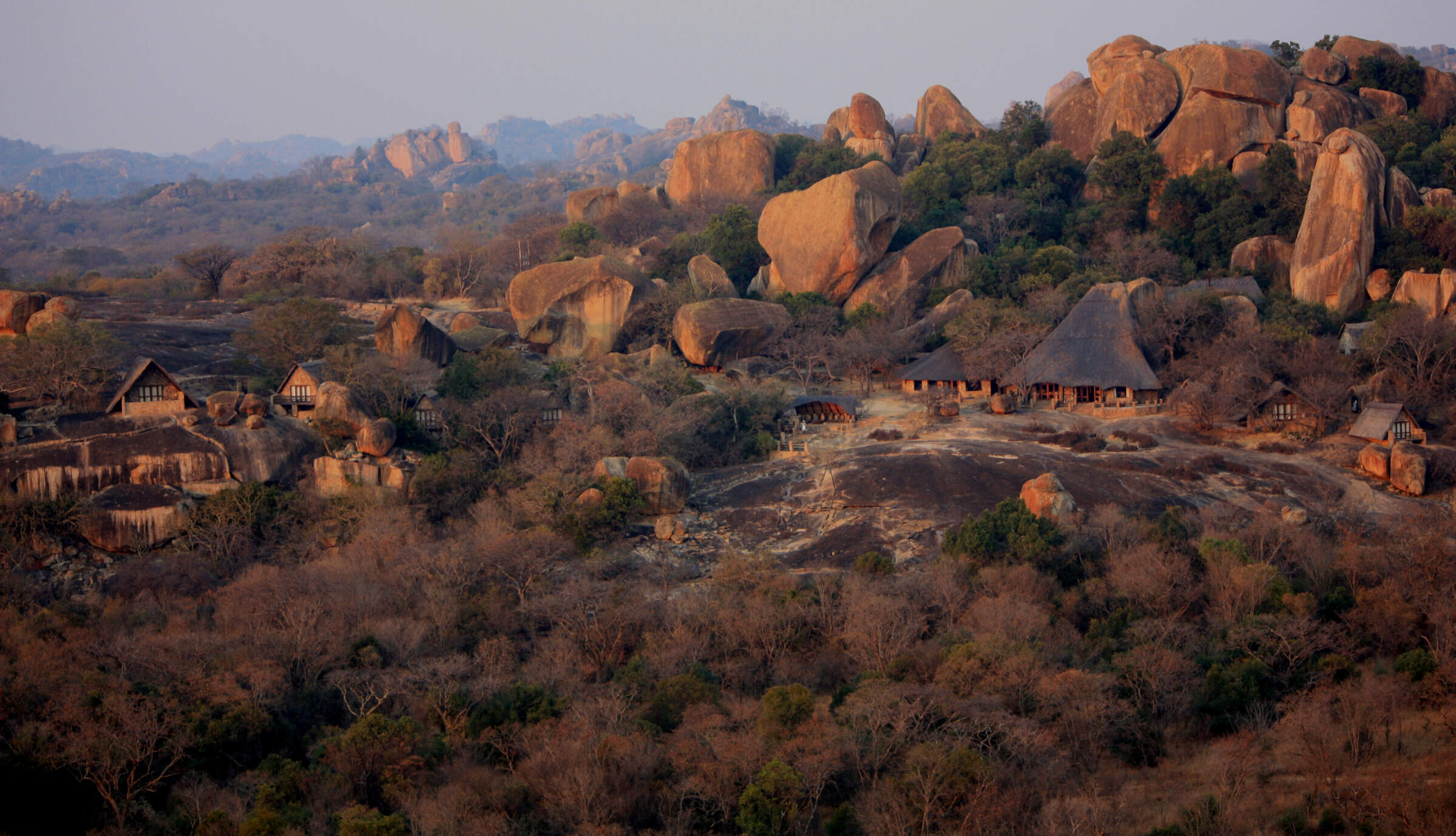
Big Cave Camp
Located on the top of a granite whaleback, Big Cave makes a simple base from which to explore Matobo Hills National Park.
When to go to Matobo National Park
Our month by month guide: What it's like to visit Amalinda Lodge in Matobo National Park
Jan
Feb
Mar
Apr
May
Jun
Jul
Aug
Sep
Oct
Nov
Dec
Zimbabwe in January
January falls in the middle of Zimbabwe’s rainy season and is the wettest month of the year. Heavy rainfall occurs most days, flooding seasonal rivers and waterholes, with the occasional sunny spell.
With the high levels of precipitation the wildlife in the national parks becomes widely dispersed, taking advantage of the abundance of food and water, and is easily hidden by the thick, green bush.
While sightings of larger animals are possible, and many species drop their young at this time, game viewing is often sparse. However, many migratory species of bird arrive in Zimbabwe making it a peak month for birding.
The rains create incredibly sticky mud in Mana Pools National Park, preventing access and causing camps to close for the season. The majority of the camps in other parks remain open, with low rates attracting a smattering of visitors.
- Peak of the rainy season: hot & humid with heavy rain most days
- Bush exceptionally thick and green, with poor game viewing
- Species such as impala drop their young
- All camps in Mana Pools closed
- Very few visitors, and low rates at open camps
Our view
A time to avoid if possible
Weather in January
Zimbabwe in February
February remains well within Zimbabwe’s rainy season. Although total rainfall drops, relatively short thunderstorms can still be expected most afternoons. On the plus side, there is a greater chance of some sunshine in-between.
Much of the country remains waterlogged, closing access to Mana Pools and severely restricting walking safaris in other parks. While game drives and canoeing remain an option, the abundance of water disperses animals, and thick grass can make it difficult to spot larger species, but birding remains excellent. Conversely, this is a great time of year to view the landscape, and is excellent for photographers. Sporadic cloud cover and clear air can make for some spectacular sunsets too, particularly over Lake Kariba and the Zambezi River where the reflections off the water add to the beauty.
- Generally wet with frequent thunderstorms & hot humid days
- Poor wildlife viewing due to dispersed animals & thick bush
- Clear air, green landscapes & exceptional sunsets
- All camps in Mana Pools closed
- Very few visitors & low rates at camps that are open
Our view
This is not a great time to visit
Weather in February
Zimbabwe in March
March is the final month of Zimbabwe’s rainy season, when the rains start to trail off and sunny days become the norm. However, some days the clouds can still build, breaking into thunderstorms in the afternoon.
Mana Pools remains closed throughout the month but the majority of camps in Hwange, Matusadona and Gonarezhou remain open. Here, the landscape is green and alive, with migrant species of birds taking advantage of the abundant insect life. Larger animals remain elusive though, and walking safaris remain restricted.
By this time of year, the rains have normally trickled down to the Zambezi River and the flow of water over the Victoria Falls starts to increase, but without kicking up too much spray to obscure the views.
- Last month of the rainy season: hot, humid days with occasional storms
- Lush vegetation means good birding, but poor game viewing
- Views of the Victoria Falls improve
- All camps in Mana Pools closed
- Open camps have few visitors & low rates
Our view
This is not a great time to visit
Weather in March
Zimbabwe in April
April marks the end of Zimbabwe’s rainy season and the end of summer. Clear skies are the norm, with just the occasional shower. Temperatures start to drop, failing to reach 30ºC most days and dropping down to around 10ºC at night.
As the rain fades the landscape starts to dry out. While the vegetation remains thick and green, the soil in Mana Pools dries enough for camps to open, and the only camps to remain closed are the most remote bushcamps in Hwange. Although viewing of larger animals remains tricky, the improved weather starts to draw back visitors, as do prices significantly below those in the peak season.
The Zambezi River and flow of water over the Victoria Falls is at its highest, although large amounts of spray diminish views of the waterfall itself.
- Transitional period, with much lower rainfall & falling temperatures
- Wildlife is still dispersed & hard to see, but sightings improving
- Views of the Victoria Falls often obscured by spray
- Camps in Mana Pools open
- Visitors start to return & camps increase their rates
Our view
A good time to visit, with pros & cons
Weather in April
Zimbabwe in May
The first month in the dry season, May is also Zimbabwe’s first month of winter. If the rains are particularly late in a given year, you may catch the odd shower, but you can expect clear and sunny days the majority of the time. While it’s warm in the daytime, temperatures drop to single digits at night, so bring a warm jumper and gloves for early morning drives.
With the rain having cleared the air, the sky is bright blue, and it’s the best time of year for photography.
Even the most remote camps in Zimbabwe are now open. With the lack of rainfall, vegetation dies back significantly, and seasonal rivers return to sand. Not only does this open up the possibility of walking safaris, but wildlife viewing becomes much more reliable.
- Start of the dry season, with milder days and cold nights
- Game viewing significantly improves as vegetation dies back
- Vegetation starts to turn from green to brown
- Best time for photography with crystal clear air
- Visitors start to return; all camps open & rates increasing
Our view
A very good time to visit
Weather in May
Zimbabwe in June
During June you can virtually be guaranteed of dry and sunny days, although temperatures continue to drop, and can get close to freezing at night in Hwange National Park. Jumpers, jackets and gloves are strongly recommended for early mornings and evenings.
The opportunities for wildlife viewing improve throughout the month as the landscape rapidly dries, and the animals start to gather on the banks of the Zambezi River and around Hwange’s waterholes.
Water levels in the Zambezi River start to drop, reducing the amount of spray kicked up at the Victoria Falls and greatly improving visibility, but still allowing a full curtain of water to cascade over the edge.
- Middle of winter, with night-time temperatures close to freezing
- Game viewing significantly improves throughout the month
- Views of the Victoria Falls are at their best
- Noticeable increase in visitor numbers
- Camps considerably more expensive
Our view
A very good time to visit
Weather in June
Zimbabwe in July
July sits in the middle of Zimbabwe’s dry season. Although it’s warm at midday, temperatures are generally cold and in Hwange it’s been known to drop below freezing at night, with the lower-altitude Mana Pools feeling a bit warmer.
With wildlife clustering around the few remaining waterholes, sparse vegetation, and some of the best views of the Victoria Falls, this is one of the most popular times to travel, with camps charging peak season rates to reflect this. That said, visitor numbers to the country in general remain low, and outside of the Victoria Falls it’s rare for any areas to feel crowded.
- Middle of the dry season with almost no chance of rain
- Clear sunny days, but very cold nights
- Wildlife viewing good; game drives and walking safaris unrestricted
- Views of the Victoria Falls at their best
- Camps charging peak season rates
Our view
A very good time to visit
Weather in July
Zimbabwe in August
While August is the end of winter and temperatures are starting to creep up, mornings and nights are still cold, and game drives in open vehicles can feel particularly chilly. Well into the dry season, the landscapes will have mostly transformed from green to brown and wildlife viewing in Zimbabwe’s national parks is approaching its best. Due to dust kicked up into the atmosphere and smoke from bush fires you may start to notice a haze on the horizon, but this doesn’t significantly impact photography.
August is one of the most expensive months, and the pleasant weather and decent game viewing attracts lots of visitors. While the national parks rarely feel crowded, Victoria Falls accommodation can sell out a year in advance.
- Warm, sunny days but cold mornings & nights; almost no chance of rain
- Wildlife viewing nearly at its best
- Landscape turns brown, & an atmospheric haze develops
- All camps charging peak season rates
Our view
Fantastic: the very best time to visit
Weather in August
Zimbabwe in September
Temperatures in September rarely drop below 15ºC, but are yet to reach the oppressive highs of summer. It will normally have been five months since the last drop of rain, so antelope and elephants cluster around whatever water remains, with predators never too far away.
The landscape is very brown, and the haze building on the horizon takes some of the colour out of the sky, so while animal subjects are plentiful, the background is not ideal for photography.
The combination of incredible wildlife viewing, hot and sunny weather, and cheaper flights outside of the school holidays make this the most popular time of year to travel, and availability at the camps can become limited up to a year in advance.
- The best month for weather, with a pleasantly warm temperature range
- One of the best months for game viewing
- Victoria Falls starting to dry but still impressive on Zimbabwean side
- All camps are charging peak season rates
- Most popular time to travel, & space can be limited
Our view
Fantastic: the very best time to visit
Weather in September
Zimbabwe in October
October is the last month of the dry season with little chance of rain but building humidity. While the higher elevation of Hwange National Park limits temperatures to the 30s Celsius, they can easily top 40ºC in Mana Pools.
With little vegetation or water, wildlife is drawn to the few remaining water sources and viewing is at its best; visitors who brave the heat can be rewarded with some exceptional sightings, although haze in the air diminishes photos. Maximum visibility and dense wildlife concentrations can also make for very rewarding walking safaris, although the heat can make them uncomfortable.
Water levels in the Zambezi at the Victoria Falls drop significantly, and large stretches of the waterfall are a dry cliff-face – although it never dries completely. Camp rates remain at their peak, but visitor numbers drop as people avoid the heat.
- Last month of the dry season; very hot with building humidity
- Wildlife viewing at its very best
- Dust & smoke in the air diminish photographic opportunities
- Victoria Falls starting to look very dry
- Camp rates remain at their peak
Our view
A very good time to visit
Weather in October
Zimbabwe in November
November is a transitionary period, with high temperatures and humidity. While they can’t be predicted with any precision, the first rains normally arrive halfway through the month, in the form of thunderstorms lasting a few hours each day.
Early November is a popular time to travel as the camps drop their rates, so if you’re lucky you can get peak-season game viewing at low-season rates. This is a gamble though as if the rains do arrive, animals are no longer limited to a few dangerous waterholes and will disperse into the bush. While all the camps in Mana Pools intend to remain open, the rains can make the airstrips unusable so you may find yourself moved to a different park, a risk that increases through the month.
- Typically the start of the rains in Zimbabwe
- Temperatures & humidity levels remain high
- Wildlife viewing rapidly diminishes as the rains arrive
- Camps remain open, but risk early closure in Mana Pools
- Much cheaper time to travel as camps drop their rates
Our view
A good time to visit, with pros & cons
Weather in November
Zimbabwe in December
By December the rainy season has begun in earnest; this is one of the wettest months in Zimbabwe, with heavy thunderstorms most afternoons and occasionally continuous rain for a couple of days. While temperatures start to cool down the high levels of humidity can make the heat feel more oppressive.
With the rains comes an explosion of green growth, and the dust and smoke are washed out of the air. The resulting scenery – with the occasional bright blue skies – can be fantastic for photographers. Thick vegetation and plentiful water makes viewing of larger animals tricky, but with migratory species arriving the birding is at its best.
All camps in Mana Pools and the remote Hwange camps close, with those remaining open charging their lowest rates.
- One of the wettest months in Zimbabwe
- High temperatures & levels of humidity
- Wildlife viewing poor, but birding good
- Lush green landscapes & clear air; great for landscape photography
- All camps in Mana Pools closed
Our view
This is not a great time to visit
Weather in December

Looking for inspiration on where to travel next?
Visit our trip chooser to explore your options and find inspiration for your perfect African adventure
Inspire me